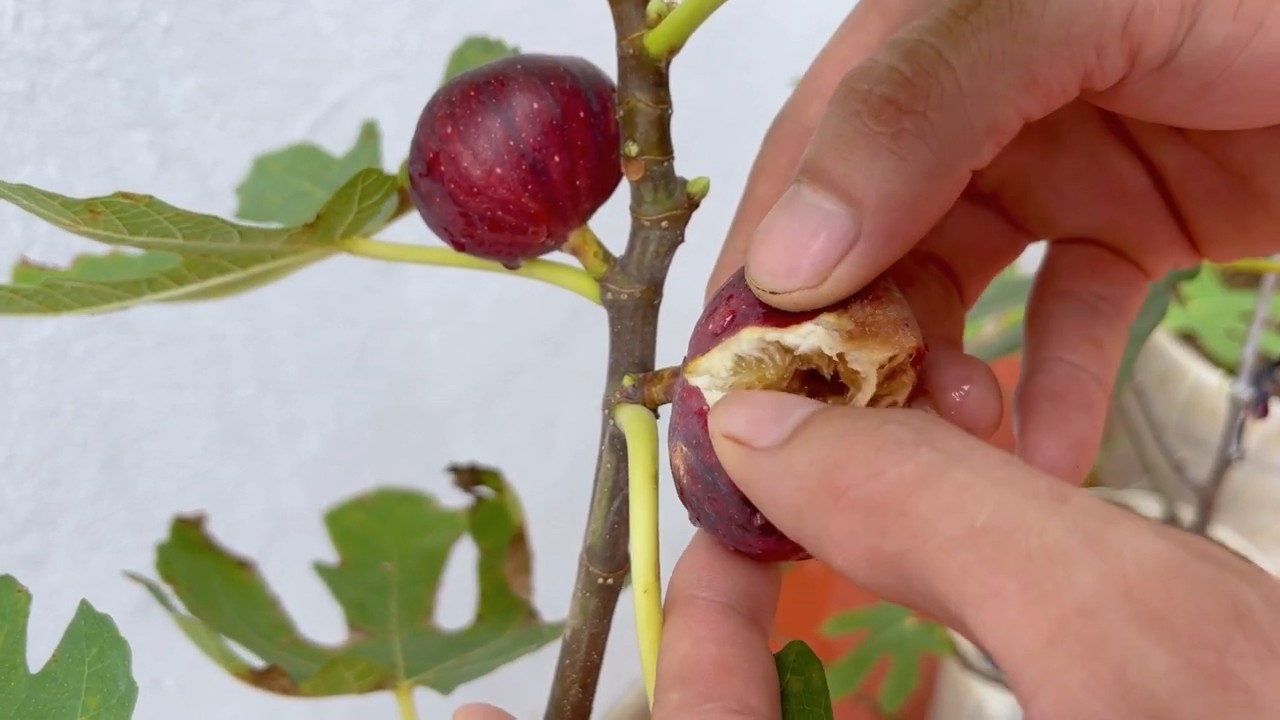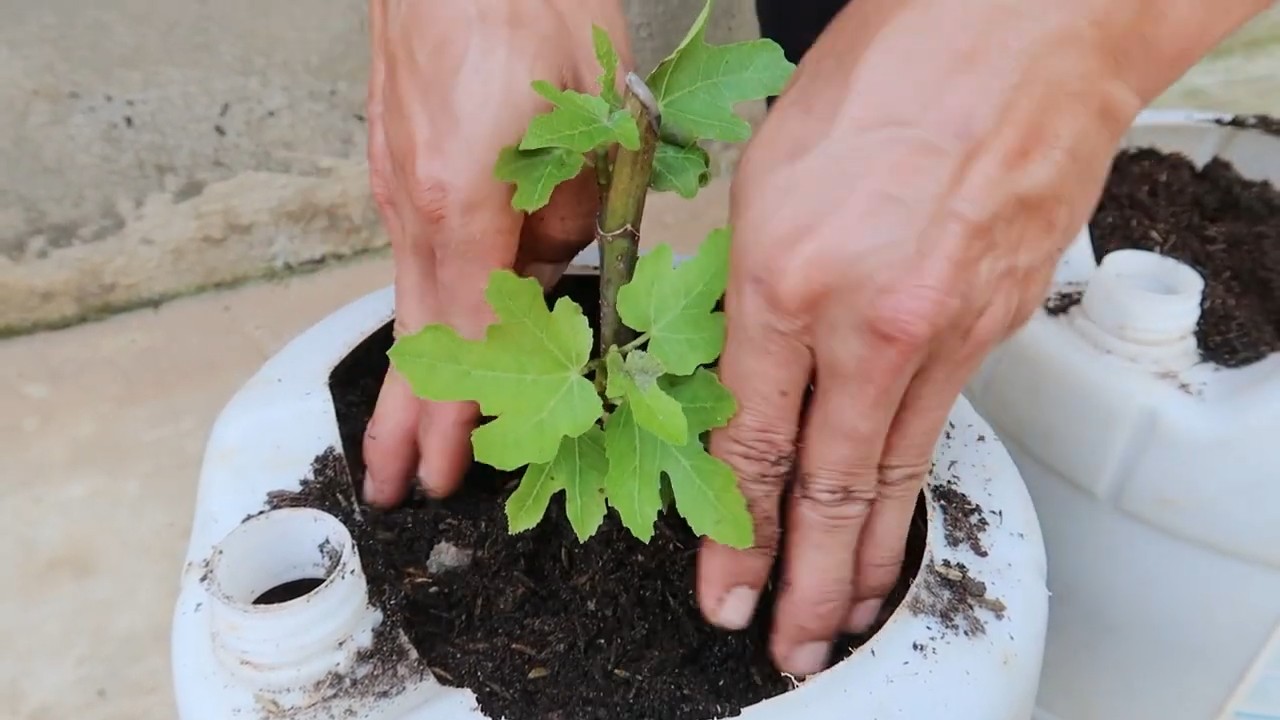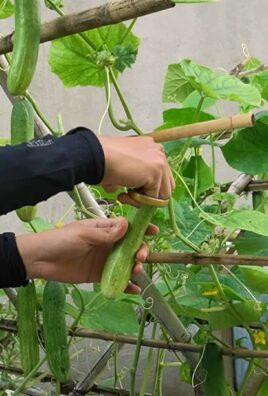Growing Figs in Containers might seem like a challenge, especially if you don’t have a sprawling backyard. But guess what? It’s totally achievable, and I’m here to show you how! For centuries, figs have been cherished, not just for their delicious, honeyed flavor, but also for their symbolic significance in various cultures. From ancient Greece, where they were associated with fertility and prosperity, to the Mediterranean, where they’re a staple in countless dishes, figs have a rich and fascinating history.
But let’s be honest, most of us aren’t growing figs for historical reasons. We want those sweet, juicy fruits right at our fingertips! And that’s where this DIY guide comes in. Maybe you’re short on space, live in an apartment, or simply want the flexibility of moving your fig tree around to chase the sun. Whatever your reason, growing figs in containers offers a fantastic solution. This article will provide you with simple, step-by-step instructions and insider tips to ensure your container-grown fig tree thrives, producing an abundance of delectable figs for you to enjoy. Get ready to embark on a rewarding gardening adventure – let’s get started!

Growing Figs in a Pot: Your DIY Guide for a Bountiful Harvest
Hey garden friends! Do you also have a weakness for juicy, sweet figs? I love them! But what if you don’t have a huge garden? Don’t worry, because I’m going to show you how to successfully grow fig trees in pots. It’s easier than you think and you’ll soon be able to harvest your own delicious figs. Let’s get started!
Why Grow Figs in a Pot?
- Space-saving: Ideal for balconies, patios, and small gardens.
- Controllable conditions: You can better control the soil quality, watering, and sun exposure.
- Winter protection: Fig trees in pots are easier to protect from frost.
- Decorative: A fig tree in a pot is a real eye-catcher.
What you need:
- Fig tree sapling: Choose a variety that is suitable for growing in a pot (e.g., ‘Brown Turkey’, ‘Little Miss Figgy’, ‘Celeste’). Make sure the sapling looks healthy and is well-rooted.
- Large pot: At least 40-50 cm in diameter. Terracotta or plastic are both suitable, but terracotta is more breathable.
- High-quality potting soil: A mixture of garden soil, compost, and sand is ideal. You can also use special potting soil for container plants.
- Drainage material: Expanded clay pebbles, gravel, or broken pottery shards for the bottom of the pot.
- Watering can or hose: For watering.
- Pruning shears: For pruning.
- Fertilizer: Slow-release fertilizer or liquid fertilizer for fruit trees.
- Mulch: Bark mulch or straw to retain moisture in the soil.
- Gloves: To protect your hands.
Step-by-Step Guide: Planting a Fig Tree
- Prepare the pot: First, I place a layer of drainage material (expanded clay pebbles) on the bottom of the pot. This ensures that the water can drain well and the roots don’t rot. A layer of about 5-10 cm is perfect.
- Fill with soil: Now I fill the pot with the potting soil. Leave about 5-10 cm of space at the top so you can water later without the soil overflowing.
- Prepare the sapling: Carefully remove the fig tree sapling from its nursery pot. Loosen the roots a bit so they can spread out better in the new pot. If the roots are very dense, you can gently pull them apart with your fingers.
- Planting: Place the sapling in the center of the pot. The top of the root ball should be about level with the soil surface. Fill the pot with soil and press it down lightly.
- Watering: Water the fig tree thoroughly until water runs out of the drainage holes. This helps to settle the soil and moisten the roots.
- Mulching: Spread a layer of mulch (bark mulch or straw) around the trunk of the fig tree. This keeps the moisture in the soil and suppresses weeds.
Location and Care: How Your Fig Tree Will Thrive
- Sunny location: Fig trees love the sun! Place the pot in a sunny location where the tree gets at least 6-8 hours of sun per day. A south-facing balcony or patio is ideal.
- Watering: Water the fig tree regularly, especially during the growing season (spring and summer). The soil should always be slightly moist, but not wet. Avoid waterlogging, as this can lead to root rot. In the fall and winter, I reduce watering as the tree needs less water.
- Fertilizing: Fertilize the fig tree every 2-4 weeks during the growing season with a liquid fertilizer for fruit trees. Alternatively, you can work a slow-release fertilizer into the soil in the spring. Be sure to follow the instructions on the fertilizer package.
- Pruning: Prune the fig tree in late winter or early spring before new growth begins. Remove dead or damaged branches and thin out the crown to improve air circulation. A light pruning also promotes fruit production.
- Overwintering: Fig trees are not hardy and must be protected from frost. In colder regions, you should move the pot to a cool, bright place in the fall, such as a garage, a basement, or a greenhouse. The temperature should ideally be between 0 and 10 degrees Celsius. Water the tree sparingly during overwintering to prevent it from drying out. In milder regions, you can leave the pot outside, but protect it from frost with fleece or jute.
Common Problems and Solutions
- Leaf drop: Leaf drop can be caused by various factors, e.g., stress from repotting, too little water, too much water, temperature fluctuations, or pests. Check the conditions and adjust the care accordingly.
- No fruit: If your fig tree is not producing fruit, it could be due to too little sun, incorrect fertilizing, or a lack of pollination. Make sure the tree gets enough sun, fertilize it correctly, and choose a self-fruiting variety.
- Pests: Fig trees can be infested by various pests, e.g., spider mites, aphids, or scale insects. Check the tree regularly for pests and combat them with suitable means if necessary. I prefer natural methods like neem oil or soapy water.
- Root rot: Root rot is caused by waterlogging. Make sure the pot has good drainage and don’t overwater the tree. If you suspect root rot, repot the tree in fresh soil and remove all rotten roots.
Harvest Time: The Reward for Your Efforts
The harvest time for figs is usually in late summer or fall, depending on the variety and climate. The figs are ripe when they are soft and come off the tree easily. The color of the fruit varies depending on the variety. Enjoy your homegrown figs fresh from the tree or use them for jam, cakes, or other treats.
Additional Tips for Success
- Variety selection: Choose a fig variety that is suitable for growing in a pot and thrives in your climate. Inform yourself about the characteristics of the different varieties before buying.
- Regular repotting: Repot the fig tree every 2-3 years into a larger pot to give it enough space for its roots.
- Pollination: Some fig varieties require a special fig wasp for pollination. If you have such a variety, you may need to introduce a fig wasp or choose a self-fruiting variety.
- Patience: Fig trees need time to grow and bear fruit. Be patient and give your tree the right care, and you will be rewarded with a bountiful harvest.
Conclusion
Growing figs in a pot is a rewarding project that provides you with fresh, delicious fruit right from your balcony or patio. With the right care and a little patience, you can create your own little fig grove. Happy gardening!

Conclusion
So, there you have it! Growing figs in containers isn’t just a possibility; it’s a pathway to fresh, delicious figs right on your patio, balcony, or even indoors with enough sunlight. We’ve explored the ins and outs of selecting the right container, choosing the perfect fig variety, providing optimal care, and even overwintering your precious fig tree. But why is this DIY trick a must-try?
Firstly, container gardening offers unparalleled control. You dictate the soil composition, ensuring your fig tree receives the precise nutrients it needs. You can easily move your tree to chase the sun or shelter it from harsh weather. This level of control is simply unattainable with in-ground planting, especially in regions with less-than-ideal fig-growing conditions.
Secondly, it’s incredibly space-efficient. Even if you lack a sprawling garden, you can still enjoy the satisfaction of harvesting your own figs. A single container fig tree can produce a surprising amount of fruit, providing you with a bounty for snacking, baking, or preserving.
Thirdly, it’s a fantastic learning experience. Growing figs in containers allows you to observe your tree up close, learning its growth patterns, identifying potential problems early, and developing a deeper connection with nature. It’s a rewarding hobby that offers both tangible and intangible benefits.
But the journey doesn’t end here! Feel free to experiment with different fig varieties to find your personal favorite. Consider adding companion plants to your container to attract pollinators and deter pests. Try different pruning techniques to shape your tree and maximize fruit production. The possibilities are endless!
And speaking of variations, consider these ideas:
* Espaliered Figs: Train your container fig tree against a wall or trellis for a beautiful and space-saving display.
* Indoor Figs: With sufficient sunlight (or grow lights), you can enjoy figs indoors year-round.
* Hydroponic Figs: For the adventurous gardener, hydroponic fig growing offers a unique and efficient way to cultivate figs.
Ultimately, the success of growing figs in containers hinges on your willingness to learn, adapt, and experiment. Don’t be afraid to make mistakes – they’re all part of the learning process. The most important thing is to get started and enjoy the journey.
We wholeheartedly encourage you to try this DIY trick and experience the joy of harvesting your own homegrown figs. And once you do, we’d love to hear about your experience! Share your tips, tricks, and photos in the comments below. Let’s build a community of container fig growers and learn from each other. Your insights could be invaluable to someone just starting out. So, grab a container, choose your fig variety, and get ready to embark on a delicious and rewarding adventure! Remember, the key to successful **growing figs in containers** is patience, observation, and a little bit of love. Happy growing!
Frequently Asked Questions (FAQ)
What is the best type of container for growing figs?
The ideal container for growing figs should be large enough to accommodate the tree’s root system, provide adequate drainage, and be made of a durable material that can withstand the elements. A container that is at least 20-25 gallons in size is generally recommended for mature fig trees. Terracotta pots, plastic containers, and even repurposed barrels can be used, as long as they have drainage holes. Dark-colored containers can heat up quickly in the sun, so consider using lighter colors or insulating the container to protect the roots.
Which fig varieties are best suited for container growing?
Several fig varieties thrive in containers, including ‘Brown Turkey,’ ‘Chicago Hardy,’ ‘Little Miss Figgy,’ ‘Celeste,’ and ‘Black Mission.’ These varieties are known for their compact size, cold hardiness (in some cases), and ability to produce fruit even when grown in confined spaces. When selecting a variety, consider your local climate and the amount of sunlight available. Research the specific characteristics of each variety to ensure it’s a good fit for your growing conditions.
How often should I water my container fig tree?
Watering frequency depends on several factors, including the size of the container, the type of soil, the climate, and the stage of growth. Generally, you should water your fig tree when the top inch of soil feels dry to the touch. During hot, dry weather, you may need to water daily or even twice a day. Avoid overwatering, as this can lead to root rot. Ensure that the container has adequate drainage to prevent water from pooling at the bottom. A good rule of thumb is to water deeply until water drains out of the drainage holes.
What type of soil is best for container fig trees?
Fig trees prefer well-draining soil that is rich in organic matter. A good potting mix for container figs should consist of a combination of potting soil, compost, and perlite or vermiculite. This mixture will provide adequate drainage, aeration, and nutrients for the tree. Avoid using garden soil, as it can be too heavy and compact, leading to drainage problems. You can also amend the soil with slow-release fertilizer to provide a steady supply of nutrients.
How much sunlight do container fig trees need?
Fig trees require at least 6-8 hours of direct sunlight per day to produce fruit. Place your container fig tree in a location that receives ample sunlight, such as a south-facing patio or balcony. If you live in a region with hot summers, you may need to provide some afternoon shade to prevent the leaves from scorching. If you are growing your fig tree indoors, supplement with grow lights to ensure it receives enough light.
How do I fertilize my container fig tree?
Fig trees benefit from regular fertilization, especially during the growing season. Use a balanced fertilizer with a ratio of 10-10-10 or 20-20-20, following the instructions on the label. Fertilize your fig tree every 4-6 weeks during the spring and summer months. Avoid fertilizing during the dormant season. You can also supplement with organic fertilizers, such as compost tea or fish emulsion.
How do I prune my container fig tree?
Pruning is essential for maintaining the shape and size of your container fig tree and for promoting fruit production. Prune your fig tree in late winter or early spring, before new growth begins. Remove any dead, damaged, or crossing branches. You can also prune to shape the tree and encourage branching. Fig trees produce fruit on new growth, so avoid pruning too heavily, as this can reduce fruit production.
How do I overwinter my container fig tree?
Fig trees are not cold-hardy and need to be protected from freezing temperatures during the winter. If you live in a region with cold winters, you will need to overwinter your container fig tree indoors. Before the first frost, move your fig tree to a cool, dark, and frost-free location, such as a garage or basement. Water sparingly during the winter months, allowing the soil to dry out between waterings. In the spring, gradually acclimate your fig tree to outdoor conditions before placing it back in its sunny location.
What are common pests and diseases that affect container fig trees?
Common pests that can affect container fig trees include spider mites, aphids, and scale. These pests can be controlled with insecticidal soap or neem oil. Diseases that can affect fig trees include fig rust and leaf spot. These diseases can be prevented by providing good air circulation and avoiding overwatering. If you notice any signs of pests or diseases, treat them promptly to prevent them from spreading.
How long does it take for a container fig tree to produce fruit?
The time it takes for a container fig tree to produce fruit depends on the variety, the age of the tree, and the growing conditions. Some fig varieties, such as ‘Brown Turkey,’ can produce fruit in their first year, while others may take several years to mature. Providing optimal care, including adequate sunlight, water, and fertilizer, will help your fig tree produce fruit sooner. Be patient and persistent, and you will eventually be rewarded with a bountiful harvest of delicious figs.





Leave a Comment